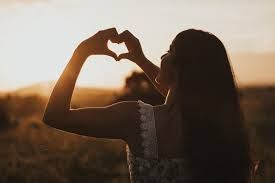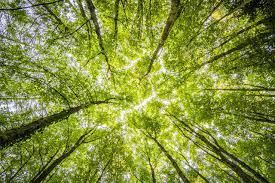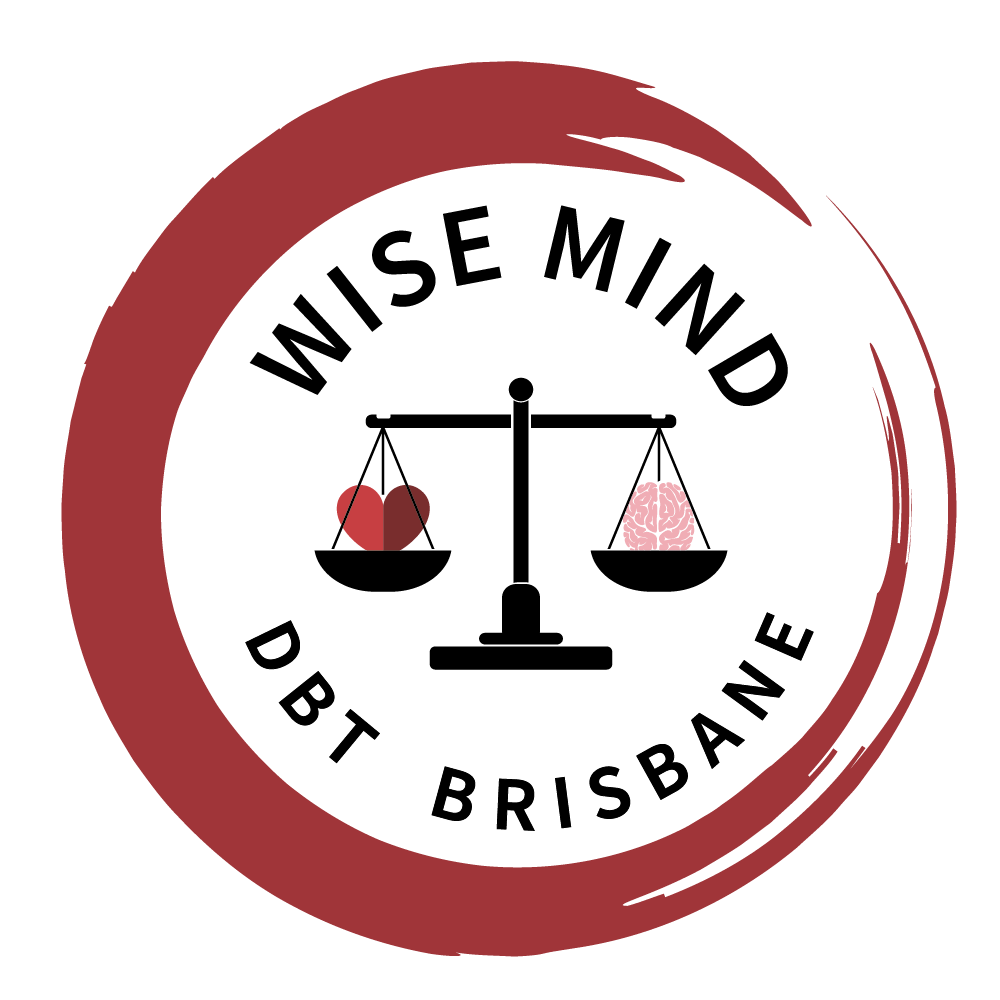Trauma: Its Impact and the Path to Recovery
Jean-Gabrielle Short • September 9, 2024
Trauma, especially when experienced during childhood, can have profound and lasting effects on a person’s emotional, mental, and physical well-being. For many, the experience of trauma isn’t just about what happened in the past—it continues to impact them daily, shaping their emotions, relationships, and self-perception. When trauma occurs in childhood, it can lead to a specific kind of distress called Complex Post-Traumatic Stress Disorder (C-PTSD), which involves a host of complicated and often overwhelming symptoms.
Recent research, including a study that explored Dialectical Behaviour Therapy for PTSD, highlights how therapy can offer relief and recovery for people dealing with C-PTSD. In this blog, we’ll explore the effects of trauma, the symptoms that people commonly experience, and how approaches like DBT-PTSD can help survivors regain control of their lives.
The Impact of Childhood Trauma
Childhood is meant to be a time of learning and growth. But for those who have suffered abuse—whether physical, emotional, or sexual—it can become a period marked by fear, pain, and confusion. Trauma experienced during childhood can be particularly harmful because it happens when a person is still developing both physically and emotionally. These early experiences can alter brain development, especially in areas related to emotional regulation, memory, and relationships.
Childhood trauma is often considered "complex trauma." This is because it usually involves repeated exposure to harmful experiences, rather than a single traumatic event. When this trauma comes from trusted figures—like parents or caregivers—it can be even more damaging. As a result, people who survive childhood trauma may develop Complex PTSD, which includes many of the same symptoms as PTSD but with additional emotional and interpersonal difficulties.
Common Symptoms of Trauma
Trauma manifests in a variety of ways, and not everyone experiences it the same. However, there are common symptoms that many trauma survivors face. These symptoms can interfere with daily life, making it hard to maintain healthy relationships, work, and even care for oneself. Here are some of the key symptoms:
Emotional Dysregulation:
One of the hallmark features of trauma is difficulty managing emotions. This might involve extreme mood swings, anger, sadness, or numbness. It can lead to impulsive behaviours like self-harm or substance use, especially for people with C-PTSD.
Hypervigilance and Anxiety:
Many trauma survivors constantly feel on edge, as though danger is always lurking around the corner. This heightened state of alertness, known as hypervigilance, often leads to anxiety, trouble sleeping, and difficulty relaxing.
Flashbacks and Intrusive Memories:
A common experience for people with PTSD or C-PTSD is reliving the traumatic event through flashbacks or intrusive thoughts. These moments can feel incredibly real, as though the person is back in the traumatic situation, which can be distressing and disorienting.
Dissociation:
Some people who experience trauma may find themselves dissociating, which means feeling disconnected from their body, emotions, or surroundings. This can range from mild (feeling numb or spaced out) to severe (feeling like you’re watching yourself from outside your body).
Relationship Difficulties:
Trauma can make it hard to trust others, which often leads to problems in relationships. Some survivors fear abandonment, while others struggle with intimacy. These issues can create a push-pull dynamic in relationships, making them unstable.
Negative Self-Image:
Many people with C-PTSD carry a deep sense of shame or guilt. They may feel they are worthless, unlovable, or inherently flawed. This negative self-image is often rooted in the trauma they experienced, especially if it involved abuse during childhood.
How DBT-PTSD Helps with Trauma Recovery
When it comes to treating trauma, especially C-PTSD, a one-size-fits-all approach doesn’t work. People need comprehensive, flexible treatments that address both the trauma itself and the emotional difficulties that come with it. That’s where DBT-PTSD comes in. DBT-PTSD is an evidence-based treatment designed to help individuals with Complex PTSD, particularly those whose trauma stems from childhood abuse.
DBT-PTSD combines elements of several therapies, including Dialectical Behaviour Therapy (DBT), Cognitive Behavioural Therapy (CBT), Acceptance and Commitment Therapy (ACT), and Compassion-Focused Therapy (CFT). This blend of approaches addresses both the trauma itself and the emotional dysregulation that often accompanies it.
The treatment is modular, meaning it has different stages. Initially, it focuses on stabilising emotions and creating a sense of safety. Later, it works on processing the trauma and helping the individual integrate those memories into their life story in a way that feels manageable and less distressing.
Managing Emotional Dysregulation
One of the main challenges for people with trauma is learning how to regulate their emotions. DBT-PTSD helps individuals gain control over their emotional responses through DBT’s core skills: mindfulness, emotion regulation, distress tolerance, and interpersonal effectiveness.
By developing these skills, people can learn to recognise their emotions without being overwhelmed by them. They can also develop healthier ways to cope with distress and begin to interact more effectively with the people around them. For someone who has spent years feeling at the mercy of their emotions, this can be a significant step toward recovery.
Processing Trauma Memories
A key part of trauma recovery involves confronting and processing traumatic memories. DBT-PTSD uses trauma-focused therapy techniques to help individuals work through their memories in a safe and structured way. Exposure therapy, for example, is a method where people gradually face their traumatic memories, reducing the emotional intensity over time.
Alongside this, DBT-PTSD incorporates compassion-focused therapy to help survivors develop self-compassion. This is crucial for people who may have internalised blame, shame, or guilt. By learning to treat themselves with kindness, they can begin to heal from the harmful self-beliefs that often accompany trauma.
Rebuilding a Meaningful Life
Perhaps the most important goal of DBT-PTSD is to help people build a life worth living—a life that is not defined by their trauma. This involves reconnecting with personal values, setting goals, and taking steps to create a fulfilling life. Recovery from trauma isn’t just about reducing symptoms; it’s about rediscovering meaning and purpose.
Through the combination of acceptance and change, individuals can learn to live with their trauma without letting it dominate their lives. This doesn’t mean forgetting what happened, but it does mean finding a way to move forward with resilience and hope.
The Road to Healing
The effects of trauma, particularly childhood trauma, can be overwhelming. But with the right support and treatment, healing is possible. DBT-PTSD offers a path forward for individuals grappling with C-PTSD, helping them regulate their emotions, process their traumatic memories, and build a life that feels meaningful.
Trauma recovery is a journey, and while it may be long and challenging, it’s also filled with opportunities for growth and transformation. The scars of trauma may never fully disappear, but with the right tools and support, survivors can learn to live with them and thrive.

By Jean-Gabrielle Short
•
April 1, 2025
How Do Eating Disorders Start? Many individuals with BPD and eating disorders describe similar patterns of emotional distress that lead to compulsive eating behaviours. The onset of binge eating disorder often stems from: Restrictive Dieting: Cutting calories too aggressively can trigger intense cravings, leading to binge eating. Emotional Coping: Many people use food as a way to manage stress, trauma, or overwhelming emotions. Early Experiences: Childhood trauma, bullying, or growing up in a toxic home environment can contribute to food becoming a source of comfort. Guilt and Shame Cycle: The cycle of binge eating, followed by guilt and further restriction, reinforces unhealthy eating habits. These patterns can quickly spiral into an exhausting roller coaster of highs and lows, making recovery challenging without the right support. The Overlapping Traits Between BPD and Eating Disorders BPD is characterized by emotional dysregulation, unstable relationships, and an intense fear of abandonment—factors that often intersect with eating disorders. Here’s why they frequently co-exist: Emotional Dysregulation People with BPD experience extreme mood swings, often using food as a coping mechanism for overwhelming emotions. Impulsivity Impulsive behaviours, such as binge eating, purging, or restrictive eating, are common among individuals with BPD. Distorted Self-Image Low self-esteem and an unstable sense of self contribute to both BPD and eating disorders, often leading to extreme behaviours around food. Fear of Abandonment People with BPD often seek external validation, sometimes through controlling their weight and appearance. Trauma History Both conditions are linked to past experiences of abuse, neglect, or other traumatic events, reinforcing unhealthy coping mechanisms. Recognizing these overlapping traits can be the first step toward seeking appropriate treatment. The Feelings During and After Binge Eating Binge eating often provides temporary relief from emotional distress, but it quickly leads to guilt, shame, and exhaustion. The emotional process typically follows this pattern: 1. Before the Binge: Overwhelming cravings, often triggered by stress, sadness, or boredom. 2. During the Binge: A temporary escape, with feelings of excitement or comfort. 3. After the Binge: Intense shame, self-loathing, and sometimes further restriction or purging. 4. The Cycle Continues: These behaviours reinforce a cycle that can feel impossible to break. Many individuals with BPD and binge eating disorder report feeling powerless against their urges, making professional treatment crucial for recovery. The Path to Stopping the Cycle: Effective Treatment Approaches When BPD and an eating disorder co-exist, a holistic and integrative treatment approach is essential. Here are some of the most effective methods: Emotion Regulation Skills – Manage triggers & reduce emotional eating PLEASE – Take care of your Physical health, Lifestyle balance, Eating habits, Avoid mood-altering substances, Sleep, and Exercise to stabilise emotions. Opposite Action – If you feel the urge to binge out of sadness, do the opposite (e.g., go for a walk, call a friend). Check the Facts – Ask yourself: Am I really hungry, or am I trying to soothe an emotion? Distress Tolerance Skills – Cope without food as an escape TIPP – Use Temperature (cold splash), Intense exercise, Paced breathing, and Paired muscle relaxation to regulate urges. Urge Surfing – Cravings come in waves. Instead of acting on them, observe them like a passing tide. ACCEPTS – Distract yourself with Activities, Contributing, Comparisons, Emotions, Pushing away, Thoughts, and Sensations** instead of binging. Distress Tolerance Skills – Become aware of eating patterns Mindful Eating – Slow down, chew thoroughly, and truly experience each bite without distractions. Non-Judgmental Stance – Avoid self-shame. Instead of “I failed,” say, “I had a binge episode, and I can learn from this.” Radical Acceptance – Accept your emotions and experiences as they are, without resistance or self-criticism. Interpersonal Effectiveness – Set boundaries & seek support DEAR MAN – Communicate your needs assertively (e.g., asking for support, saying no to food pushers). FAST – Maintain self-respect when dealing with food-related guilt or judgment from others. Recovery is possible! ~ Using DBT skills can help you break free from the cycle of binge eating and build a healthier relationship with food. FAQs ❓ 1. Can BPD cause an eating disorder? While BPD doesn’t directly cause eating disorders, its symptoms—such as impulsivity, emotional dysregulation, and trauma history—often contribute to disordered eating behaviours. ❓ 2. Why do people with BPD struggle with food? Food is often used as a way to cope with intense emotions, self-worth struggles, and a fear of abandonment—common traits of BPD. ❓ 3. What is the best therapy for BPD and eating disorders? Dialectical Behaviour Therapy and RO-DBT are highly effective for both conditions, as it helps with emotional regulation, impulsivity, and mindfulness. ❓ 4. How can I stop binge eating if I have BPD? Developing emotional regulation skills, using distress tolerance techniques, and seeking therapy can help manage binge eating urges. ❓ 5. Can someone recover from both BPD and an eating disorder? Yes! With the right combination of therapy, support, and self-awareness, individuals can recover and build a healthier relationship with food and emotions.

By Jean-Gabrielle Short
•
February 15, 2025
Why Safety Matters Feeling safe isn’t just about avoiding physical danger, mental and emotional safety are equally important. Safety is the foundation of human well-being and performance. When we feel safe, our bodies enter a state of relaxation and recovery, allowing us to heal, build resilience, and thrive. On the other hand, chronic feelings of unsafety trigger stress responses, affecting our mental, emotional, and physical health. Consider how new-born babies flourish when nurtured in a stable, loving environment. They grow not only physically but also emotionally and cognitively. In contrast, individuals raised in chaotic or abusive environments often struggle with chronic anxiety, trust issues, and even long-term physical health problems. Their bodies and minds become wired for hypervigilance rather than growth. And if you were raised in a chaotic or abusive environment, I want to tell you: You are not alone, and this is not the end of your story. Ending your life is not the solution. You are not your enemy, be kind to yourself. It’s not your fault. Life is unpredictable, and we are all just human. Unresolved trauma and unacknowledged pain can leave individuals feeling isolated, burdened, and disconnected from a sense of normalcy. When those who should provide protection fail to do so, it can create lasting wounds. Breaking free from these cycles requires seeking support, acknowledging past pain, and working toward healing. The Impact of Feeling Unsafe on the Mind and Body When we don’t feel safe, our nervous system shifts into survival mode. This activates the fight-or-flight response, flooding our bodies with stress hormones. Over time, chronic stress can cause severe mental and physical wear and tear, leading to issues such as: Anxiety and depression Difficulty forming or maintaining relationships Chronic physical illnesses Self-destructive behaviours as a coping mechanism One of the most damaging effects of chronic stress is the feeling of being trapped. Whether it’s being trapped in an unhealthy environment, toxic relationships, financial instability, or even our own negative thoughts, the sensation of having no control can fuel anger, frustration, and destructive actions. Harmful Coping Mechanisms and Breaking Free When we feel unsafe, we instinctively seek ways to regain control. Unfortunately, many of these coping strategies can be harmful in the long run. Some common responses include: Substances, gambling, food, or even social media can become temporary escapes from feelings of fear and insecurity. DBT Skills to Cope: Distress Tolerance (ACCEPTS & Self-Soothing): Engage in healthy distractions, such as listening to music, going for a walk, or practising deep breathing, to reduce urges. Radical Acceptance: Instead of avoiding pain through addiction, acknowledge reality as it is and work towards healthier coping mechanisms. Mindfulness: Stay present and observe cravings without acting on them, recognizing that they come and go like waves. DBT Skills to Cope: Interpersonal Effectiveness (DEAR MAN, GIVE, FAST): Learn to assert your needs without resorting to control or manipulation. Healthy relationships are built on respect and balance. Emotion Regulation (Opposite Action): If the urge to control arises from fear, practice the opposite by letting go in small, manageable ways and observing the outcome. Checking the Facts: Challenge distorted thoughts that make you feel the need for excessive control. Ask yourself, “Is this truly a threat?” DBT Skills to Cope: Self-Validation: Practice recognizing your feelings and experiences as valid, even if others don’t acknowledge them. Building Mastery: Engage in activities that give you a sense of competence and accomplishment, such as hobbies, learning, or small daily achievements. Wise Mind & Radical Acceptance: Balance logic and emotions when evaluating self-worth. Accept imperfections as part of being human rather than as failures. By using these DBT skills, we can develop healthier coping mechanisms and create a genuine sense of safety, one that isn’t dependent on harmful behaviours or external validation. Building a Lasting Sense of Safety True safety comes from within. It’s about creating an internal environment where we feel secure, resilient, and at peace, regardless of external circumstances. Here’s how we can foster genuine safety: Emotional Vulnerability Real human connection is built on trust and vulnerability. While society often discourages vulnerability, it is crucial for healing. Suppressing emotions, especially anger, only fuels more stress and disconnection. Learning to express emotions in healthy ways can reduce anxiety and create deeper relationships. Dynamic Healing Rather than just “managing” stress, dynamic healing focuses on shifting our nervous system from a constant threat state to one of safety. This involves: Mindfulness and grounding techniques to bring awareness to the present moment Therapy and self-reflection to address past trauma and negative thought patterns Breathwork and relaxation practices to regulate stress responses DBT Therapy and Skills Dialectical Behaviour Therapy is an evidence-based approach that can be incredibly effective in helping individuals feel safe and in control of their emotions. DBT skills such as distress tolerance, emotion regulation, interpersonal effectiveness, and mindfulness help create long-term emotional stability. However, it’s important to note that progress with DBT is not an overnight success, it often takes months or even a year to see significant change. But the effort is worth it, as it leads to a deep and lasting sense of inner safety. Without committing to the process, you may constantly battle feelings of unsafety, missing out on the beauty and wonder that life has to offer. Creating Cues of Safety Our nervous system constantly scans for signs of danger or safety. By surrounding ourselves with positive environments, supportive relationships, and healthy routines, we can reinforce cues of safety and rewire our responses to stress. The Power of Positive Thinking One of the most important tools in creating a lasting sense of safety is the power of positive thinking. Thinking positively can help shift your mindset, making it easier to focus on what’s going well in your life rather than what’s wrong. Taking a moment each day to say something good about yourself, whether it's acknowledging your efforts, celebrating your achievements, or simply affirming your worth, can have a profound impact on your mental and emotional health. By regularly engaging in positive self-talk, you not only cultivate a sense of inner peace and safety, but you also rewire your brain to recognise and appreciate the good in your life. This simple yet powerful practice is key to building resilience, reducing anxiety, and ultimately healing from the inside out. When Feeling Unsafe Comes from Trauma or Life Circumstances Feeling unsafe may stem from a variety of sources, childhood trauma, toxic relationships, financial instability, or even personal fears. In these situations, it’s important to take a step back, breathe, and assess what you can do to resolve the issue. If you can solve it, take practical steps toward healing or improvement. If it feels overwhelming or beyond your control, don’t make the situation worse by allowing it to consume you. Instead, seek help. Reaching out to a trusted person or professional can provide you with the support and guidance you need to regain a sense of safety and peace. Final Thoughts Feeling safe is more than just avoiding danger, it’s about fostering a sense of internal peace and resilience. When we prioritize healing, embrace emotional vulnerability, and reframe our responses to stress, we create a life where we can truly thrive. The path to safety isn’t about control or avoidance, it’s about understanding, growth, and connection. By taking intentional steps and utilizing tools like DBT and positive thinking, we can move from merely surviving to truly living. Don’t let the fear of unsafety hold you back, life is full of beauty, connection, and joy, and you deserve to experience it all. FAQs 1. What does it mean to feel safe, and why is it so important? Feeling safe means experiencing a sense of security, physically, emotionally, and psychologically. It is essential for overall well-being, as it allows us to relax, heal, and function effectively. 2. How does chronic stress from feeling unsafe affect mental health? Chronic stress triggers anxiety, depression, and even physical illnesses by keeping the body in a constant state of fight-or-flight. Over time, this can lead to burnout and difficulty maintaining healthy relationships. 3. What are some common but unhealthy ways people try to feel safe? Many people turn to controlling behaviours, or perfectionism as coping mechanisms. While these strategies may offer temporary relief, they often lead to deeper issues in the long run. 4. How can I create a lasting sense of safety within myself? True safety comes from within and involves healing past trauma, practicing mindfulness, surrounding yourself with positive relationships, and using tools like DBT and self-affirmation to build resilience. 5. Can therapy help with feelings of unsafety? Yes, therapy, especially approaches like DBT, can help individuals regulate their emotions, reframe negative thought patterns, and build skills to feel safer and more in control of their lives.

By Jean-Gabrielle Short
•
February 3, 2025
Life throws us challenges that can feel insurmountable, but within those moments lies an opportunity to rediscover your strength and reshape your future. When someone walks away, it's not just an ending—it’s a beginning. So, here’s a message for you: Love Yourself More: A Powerful Reminder to Choose Yourself First because at the end of the day, only you can lift yourself up. Let the Past Be Your Teacher It’s time to pour your energy into becoming the best version of yourself. Use Mindfulness to stay present and not let past mistakes or regrets control you. Distress Tolerance skills can help you get through moments when the pain seems unbearable. Breathe, ground yourself, and remember that these emotions, though intense, are temporary. Dress Your Best: Looking Good Can Boost Your Mood—Don’t Let Yourself Feel Miserable. Take care of yourself by looking your best—it can work wonders for your self-esteem. Dress for yourself, not for others. When you feel good, it can spark positive changes in your emotions and energy. Get Some Hobbies Try painting, gardening, or learning a new skill—something that excites and challenges you. Step outside your comfort zone and make new friends who uplift and inspire you. Emotion Regulation skills can help you navigate new experiences without getting overwhelmed. Be gentle with yourself as you explore new paths. Fuel Your Body, Empower Your Mind: Start Eating Healthy and Make Exercise a Priority Today! Treat your body with the love and respect it deserves. Eating healthy and exercising not only boosts your physical health but also improves your mental clarity. Radical Acceptance of your body, just as it is, will empower you to take better care of yourself. Music has a Way of Healing the Soul. Create a playlist full of positive, energizing songs to keep you going. Mindfulness is key here—let the music bring you back to the present moment, focusing on the rhythm and melody. It’s okay to cry and feel the pain—your emotions are valid—but don’t let them anchor you to one place. Distress Tolerance skills will help you weather the storm without spiralling. Consider Taking a Break from Social Media. If scrolling feels like a window into a life you’re trying to leave behind, close it. Focus instead on building a life so vibrant and fulfilling that when you return to social platforms, you’ll have stories to share that are worth celebrating. Use Interpersonal Effectiveness to reach out to those who genuinely support and understand you. Take Care of Your Mind and Heart. This journey isn’t easy, but it’s necessary. Let yourself mourn. Let yourself heal. Seek out activities that nurture your mental health, like journaling or regular walks. Mindfulness can help you process your emotions as they come—acknowledge them, feel them, and let them go. Even the act of moving your body, whether through exercise or simply strolling in a park, can do wonders for your mental clarity. Surround yourself with people who support your growth. Talk to trusted friends or family members, or join communities where you can share your experiences and draw strength from others who understand. Interpersonal Effectiveness can guide you in reaching out for support when you need it most. Visualize a Brighter Future. Close your eyes and imagine the life you want. Who do you see yourself becoming? Each day, take small steps toward that vision. Whether it’s learning a skill, starting a new job, or simply cleaning your space, these small wins add up. Radical Acceptance helps you embrace where you are right now, while working toward where you want to be. Don’t pressure yourself to "get over it" on a strict timeline. Healing is a non-linear process—it’s okay to revisit emotions as they come. Emotion Regulation will help you manage these ups and downs, ensuring they don’t overwhelm you. You Will Get Through This. One day, you’ll look back on this chapter with pride in how far you’ve come. You’ll realize that the person who mattered most all along was you. So rise, rebuild, and remember: you are worth every ounce of effort you put into yourself. 🤍🔥

By Jean-Gabrielle Short
•
January 18, 2025
DBT is rooted in a holistic understanding of human behaviour, aiming not only to teach new strategies for coping but also to create lasting change in the way people think, feel, and interact with the world around them. Here, we delve into the five comprehensive understandings that make DBT so much more than just “skills training.” 1. Learning New Psychological, Emotional, and Relational Skills At its core, DBT is a skills-based therapy. However, what sets DBT apart is how it integrates psychological, emotional, and social learning into a unified approach. It’s not about teaching skills in isolation—it’s about helping individuals understand how these skills connect to their unique experiences and challenges. For example, a person struggling with intense emotional dysregulation doesn’t just learn how to label their emotions (a mindfulness skill); they also learn how to reduce their emotional vulnerability through self-care, navigate interpersonal conflict more effectively, and tolerate distressing situations without resorting to harmful behaviours. This holistic approach ensures that individuals are not just learning skills but reshaping their entire approach to life. 2. Generalising Skills to Everyday Life DBT’s ultimate goal is to help individuals apply these skills in their real, everyday lives. This process involves more than simply practising skills during therapy sessions—it requires detailed planning, coaching, and real-world experimentation. For instance, a client who struggles with impulsive behaviours in conflict might role-play difficult conversations during individual therapy, practice interpersonal effectiveness strategies with a trusted friend, and receive phone coaching from their therapist during moments of crisis. These layers of support ensure that skills learned in therapy don’t remain theoretical but become practical tools for navigating life’s challenges. This emphasis on generalisation is particularly important for individuals who have historically responded to stress with overlearned, dysfunctional behaviours. By practising in real-world contexts, clients gain confidence and experience in using more skilful responses, even in high-stakes situations. 3. Enhancing Motivation and Replacing Dysfunctional Behaviours Change is hard—especially when dysfunctional behaviours have been overlearned and reinforced over time. DBT recognises this reality and places a strong emphasis on enhancing client motivation. Individual therapy sessions are the cornerstone of this process, offering a space where clients collaborate with their therapist to identify treatment targets, explore the function of their behaviours, and develop strategies for change. Therapists use validation, problem-solving, and dialectics to help clients replace old behaviours with new, more effective alternatives. This collaborative approach ensures that clients remain engaged in their treatment and motivated to continue working toward their goals, even when the process feels challenging. 4. Improving Social and Family Relationships Human connection is at the heart of DBT. Many clients who seek DBT have experienced tumultuous or invalidating relationships, which can exacerbate feelings of isolation, shame, and emotional dysregulation. DBT addresses these relational challenges in two ways: by helping clients build better relationships and by fostering more supportive and validating interactions with their loved ones. Through the interpersonal effectiveness module, clients learn skills like assertiveness, boundary-setting, and conflict resolution, enabling them to navigate relationships with greater confidence and clarity. In some cases, therapists may also involve family members in the treatment process, teaching them how to provide validation and support in ways that promote healing and growth for everyone involved. 5. Supporting the Therapists: Team Consultation DBT is not just hard work for clients—it’s also a demanding therapy for practitioners. To provide effective care, DBT therapists need ongoing support, validation, and skill-building. This is where the consultation team comes in. DBT consultation teams are weekly meetings where therapists come together to support each other, problem-solve challenging cases, and stay motivated in their work. These meetings are a vital part of the DBT framework, ensuring that therapists can maintain their own emotional wellbeing while delivering high-quality care. After all, a therapist who feels supported and empowered is far better equipped to guide their clients through the transformative process of DBT. DBT: A Holistic Path to Change While DBT skills are an integral part of the therapy, they are only one piece of the puzzle. The true power of DBT lies in its comprehensive approach to healing, which addresses the psychological, emotional, and relational dimensions of human experience. By teaching new skills, supporting their application in everyday life, enhancing motivation, strengthening relationships, and ensuring therapist wellbeing, DBT offers a holistic framework for creating meaningful and lasting change. It is not merely a toolkit for coping—it is a pathway to building a life worth living. For those who think DBT is just about the skills, it’s time to take a closer look. Behind every acronym and worksheet is a robust therapeutic approach that empowers individuals to rewrite their stories and reclaim their lives.

By Jean-Gabrielle Short
•
October 20, 2024
At its core, the concept of unrelenting crisis highlights the interplay of heightened emotional vulnerability and the difficulties in regulating these emotions. Many people who experience these crises often feel trapped in a cycle of distress and avoidance, which can prevent them from making meaningful progress in their lives. In DBT, we understand this as one side of a dialectic—a push-and-pull between ongoing crisis and the need for acceptance. The opposite side of this dialectic is a concept that is central to DBT: Radical Acceptance. What Is Unrelenting Crisis? Unrelenting crisis can be described as a pattern of recurrent emotional or situational crises that feel impossible to escape. For some individuals, life becomes a series of intense challenges, and just as one situation seems to resolve, another arises. This cycle is often underpinned by both external factors—like unstable relationships, financial problems, or job insecurity—and internal factors, such as emotional dysregulation, impulsive behaviours, and deep-seated feelings of shame or worthlessness. In DBT, we see this state as a result of the interplay between heightened sensitivity to emotional triggers (biological predisposition) and a lack of effective coping strategies to manage distress. Individuals caught in this cycle may be unable to prevent emotional crises from escalating and may also have difficulty resolving these crises in a healthy way. Thus, they live in a state of emotional exhaustion, constantly feeling as though their world is collapsing around them. The Dialectic: Unrelenting Crisis vs Radical Acceptance Dialectical Behaviour Therapy teaches us to embrace dialectics—the idea that two seemingly opposing truths can coexist. In the case of unrelenting crisis, the dialectical tension is between the reality of constant distress and the need to accept this reality fully. Radical Acceptance is about recognising the limitations of our control and embracing life as it is, rather than how we wish it to be. This acceptance is not passive resignation or giving up; rather, it is the active choice to stop fighting reality. It is an emotional shift that allows individuals to accept the present moment and make wise decisions about how to respond, instead of becoming paralysed by anger, shame, or resistance. Radical acceptance can feel counterintuitive to someone in a constant state of crisis. The natural instinct might be to reject or fight against the hardships in an attempt to avoid further pain. However, this refusal to accept reality often perpetuates the cycle of crisis, leading to frustration and increased suffering. It is only through acceptance that we can stop being consumed by the crisis and begin to focus on what is within our control—our responses, actions, and future choices. The Role of Radical Acceptance in Breaking the Crisis Cycle The power of radical acceptance lies in its ability to transform the way we relate to pain and crisis. When we refuse to accept reality, we expend valuable energy fighting against what is. This can lead to behaviours such as self-harm, substance use, or avoidance strategies that, while providing short-term relief, often exacerbate the situation in the long run. Radical acceptance allows us to release this internal battle, creating space for more adaptive coping strategies. Consider this: a person caught in a cycle of unrelenting crisis may feel intense frustration with their inability to change certain aspects of their life, such as a partner’s behaviour or a traumatic past. Without acceptance, they may find themselves ruminating over their misfortune or trying to force change in ways that are unproductive. Through radical acceptance, however, they come to terms with the fact that they cannot change these external realities. What they can change is their approach to these situations, their reactions, and ultimately, their path forward. Acceptance does not mean liking or approving of the current situation. It simply means acknowledging it as real and as something that cannot be changed in the present moment. From this place of acceptance, individuals can begin to make mindful, deliberate choices that align with their values and long-term goals. This shift can break the cycle of crisis, helping individuals move from reaction to response. Practical Strategies for Practising Radical Acceptance Notice and Name the Emotion : The first step to radical acceptance is recognising the feelings associated with the crisis. By naming the emotion (e.g., "I feel frustrated," "I am scared"), individuals can begin to distance themselves from the automatic urge to react impulsively. Understand the Role of Resistance : Ask yourself, "Am I fighting reality?" Notice if there is tension between what you want to be true and what actually is. Recognising this resistance can help shift towards acceptance. Breathe and Pause : Practising mindfulness and grounding techniques, such as focusing on the breath, can create space between the emotion and the reaction. This allows time to reflect on what acceptance would look like in the given situation. Make a Choice : Radical acceptance is an active decision. It might be helpful to remind yourself, "I cannot change this reality, but I can control how I respond to it." Practice Self-Compassion : Acknowledging that acceptance is hard is crucial. It’s natural to struggle with accepting painful realities. Be gentle with yourself throughout this process. Moving Forward: Healing and Growth Balancing the dialectic of unrelenting crisis and radical acceptance is not easy, but it is a crucial part of emotional growth. The process of moving from crisis to acceptance is a journey—one that requires patience, practice, and support. Over time, individuals can learn to break free from the constant state of emergency and begin to build a life worth living, where they feel more in control of their emotions and choices. In DBT, we emphasise that acceptance does not mean passivity. Rather, it is an empowering tool that allows individuals to navigate life’s challenges with resilience and wisdom. Radical acceptance offers a pathway out of the suffering cycle and into a space where healing can begin.

By Jean-Gabrielle Short
•
September 18, 2024
In DBT, we identify three main dialectics: apparent competence versus active passivity, inhibited grieving versus unrelenting crisis, and self-invalidation versus emotional vulnerability . These dialectics represent the push and pull of emotional and behavioural patterns. Just as the ocean's waves are influenced by the moon and the weather, these dialectics are shaped by both our biology and our environment. Let's explore these dialectics and their secondary targets, using the metaphor of the ocean to guide our understanding. The Three Dialectics: Navigating the Tides Apparent Competence vs. Active Passivity: This dialectic can be likened to the waves that appear calm on the surface but conceal a strong undertow beneath. Apparent competence is the behaviour of seeming to handle everything smoothly, like a serene ocean, even when turmoil brews beneath. It's a learned pattern often developed in invalidating environments where showing vulnerability is discouraged. On the flip side, active passivity resembles being swept away by the current, feeling helpless and relying on others to rescue us. This vulnerability arises from a biological predisposition to intense emotional responses, influenced by the current environment's impact on our emotions. Inhibited Grieving vs. Unrelenting Crisis: This dialectic mirrors the waves that never seem to settle, crashing against the shore relentlessly. Inhibited grieving is like holding back the tide, refusing to let the waves of grief and loss wash over us. It often stems from past environments where emotions were dismissed or suppressed. Unrelenting crisis, on the other hand, is akin to a stormy sea, where the waves are constantly churning, and the person is in a state of perpetual crisis. This secondary target has a biological basis, with environmental triggers setting off intense emotional responses that feel overwhelming and unending. Self-Invalidation vs. Emotional Vulnerability: Picture the ocean during a storm—waves crashing against each other chaotically. Self-invalidation is like judging those turbulent waves, criticising ourselves for feeling as intensely as we do. This behaviour is often learned from environments where one's emotions were dismissed or minimised. Conversely, emotional vulnerability is being in the midst of the storm, feeling every gust of wind and wave of emotion deeply. It's a biological tendency to experience emotions intensely, influenced by how our current environment interacts with our emotional responses. The Fluidity of Waves: Switching Between Extremes Just as the ocean can change from calm to stormy in an instant, we can fluidly switch between these secondary targets in real-time. One moment, we might be the calm ocean, displaying apparent competence, and the next, we're caught in a rip current of active passivity. The same fluidity applies to the other dialectics. We may suppress our grief like the stillness before a storm (inhibited grieving) and suddenly find ourselves in the throes of an emotional hurricane (unrelenting crisis). The Impact of the Environment and Learning to Navigate Biological secondary targets such as emotional vulnerability, active passivity, and unrelenting crisis arise within us, much like how weather patterns can suddenly stir the ocean into motion. These responses are influenced by how our current environment interacts with our emotional sensitivity. Meanwhile, the patterns of apparent competence, inhibited grieving, and self-invalidation are often learned behaviours, developed over time in invalidating environments. These learned patterns are similar to how the ocean shapes the shoreline; repeated exposure to invalidation can carve deep grooves in our behaviour, leading us to question our emotional responses and suppress our grief. For many, this process of invalidation began early in life. They looked to others—parents, caregivers, or peers—to help make sense of their intense emotional experiences. But when their emotions were dismissed or not mirrored by others, they began to judge their own feelings as wrong or too much. Like a shoreline that learns to brace for the incoming tide, they learned to hide their emotions, pretend everything was okay, and feared being rejected as "emotionally weak." DBT Skill: Opposite Action One DBT skill that can be incredibly useful when addressing secondary targets is Opposite Action. This skill involves identifying an emotion and then taking action that is opposite to what that emotion is urging us to do. For example, if self-invalidation is causing you to withdraw and isolate, the opposite action would be to reach out for support or engage in activities that affirm your self-worth. Similarly, when dealing with inhibited grieving, rather than avoiding reminders of loss, opposite action encourages engaging in activities that help you connect with and express your grief in a healthy manner. This skill helps create new patterns of behaviour that counteract the extremes of the secondary targets, promoting emotional balance. Learning to Surf the Waves DBT teaches us to become skilled surfers of these emotional waves. Recognising these secondary targets and understanding how they manifest in our lives is the first step toward change. While everyone experiences these patterns to some degree, they can be more intense and frequent for those in treatment. By acknowledging the dialectics and the push and pull within us, we can learn to balance on the surfboard rather than being tossed around by the waves. Through DBT skills, such as mindfulness, distress tolerance, emotion regulation, interpersonal effectiveness, and opposite action, we can learn to ride the waves of emotion without being swept away. Instead of suppressing our grief like an inhibited tide, we can allow ourselves to feel and process our emotions. Rather than judging our vulnerability, we can learn to embrace it as a part of our human experience. The ocean is ever-changing, and so are we . By understanding the dialectics within DBT and recognising the patterns of our emotional waves, we can navigate our internal seas with greater compassion and skill. In doing so, we can learn not just to survive the stormy seas but to ride the waves with confidence and grace.

By Jean-Gabrielle Short
•
August 7, 2024
The Venn diagram highlights the unique and overlapping symptoms of cPTSD and BPD: Unique to cPTSD: Emotional dysregulation, negative self-concept, and interpersonal difficulties. Unique to BPD: Impulsivity, intense fear of abandonment, and chronic feelings of emptiness. Shared Symptoms: Emotional instability, difficulty maintaining relationships, and a history of trauma. DBT, originally developed by Marsha Linehan for treating BPD, has shown promise in treating cPTSD. DBT focuses on teaching skills in four key areas: mindfulness, distress tolerance, emotion regulation, and interpersonal effectiveness. These skills are particularly beneficial for individuals with cPTSD, who often struggle with emotional dysregulation and interpersonal difficulties. Key Elements of DBT in Treating cPTSD: Mindfulness: Helps individuals stay present and aware of their thoughts and feelings without judgment. Distress Tolerance: Provides tools for coping with and surviving crises without making things worse. Emotion Regulation: Teaches strategies to manage and change intense emotions that are causing problems. Interpersonal Effectiveness: Improves communication skills and the ability to maintain healthy relationships. Supporting Evidence for DBT in cPTSD Treatment Several studies have demonstrated the effectiveness of DBT in treating cPTSD. Bohus et al. (2020) conducted a randomized clinical trial comparing DBT-PTSD (a modified version of DBT) with cognitive processing therapy (CPT) in women with complex PTSD from childhood abuse. The study found that DBT-PTSD was significantly more effective in reducing PTSD symptoms and improving emotional regulation than CPT. Additionally, Courtois (2004) emphasized that therapies focusing on trauma processing, such as cognitive processing therapy, EMDR, and prolonged exposure therapy, are beneficial for patients with cPTSD. These therapies help individuals process and integrate traumatic memories, reducing their impact on current functioning. The intricate relationship between cPTSD and BPD highlights the need for a nuanced approach to diagnosis and treatment. While there are distinct differences between the two conditions, their overlap, particularly in the context of trauma, necessitates comprehensive treatment plans that address both symptomatology and underlying trauma. Dialectical behavior therapy, with its focus on emotional regulation and interpersonal effectiveness, offers a robust framework for treating cPTSD. The evidence supporting DBT's efficacy in this context underscores its value as a therapeutic approach, providing hope and improved outcomes for individuals grappling with the complexities of cPTSD and its intersection with BPD. You can read more from the Psychiatric Times here: https://www.psychiatrictimes.com/view/what-is-complex-posttraumatic-stress-disorder-and-how-does-it-relate-to-borderline-personality-disorder

By Jean-Gabrielle Short
•
July 23, 2024
Understanding Emotional Dysregulation in ADHD Attention Deficit Hyperactivity Disorder (ADHD) is commonly associated with symptoms such as inattention, hyperactivity, and impulsivity. However, emotional dysregulation is another critical aspect of ADHD that is often overlooked. Emotional dysregulation refers to difficulties in managing and responding to emotional experiences appropriately. For women with ADHD, this can manifest as intense emotional reactions, mood swings, and difficulty calming down once upset. Why DBT for ADHD? Dialectical Behaviour Therapy (DBT) was originally developed by Dr. Marsha Linehan to treat Borderline Personality Disorder (BPD), a condition characterised by severe emotional dysregulation. However, over the years, DBT has proven effective for various other conditions, including ADHD. The skills taught in DBT are designed to help individuals understand and manage their emotions better, making it an excellent fit for addressing the emotional challenges associated with ADHD. The Emotion Regulation Module The Emotion Regulation module in DBT focuses on teaching skills to help individuals understand and manage their emotions more effectively. Here are some key components of this module and how they can benefit women with ADHD: Understanding and Naming Emotions One of the first steps in emotion regulation is understanding and naming your emotions. This involves recognising what you are feeling and why you are feeling it. For women with ADHD, this can be particularly helpful as it allows you to slow down and reflect on your emotional experiences instead of reacting impulsively. By identifying your emotions, you can start to see patterns and triggers that lead to emotional dysregulation. Reducing Vulnerability to Emotion Dysregulation DBT teaches skills to help reduce vulnerability to emotional dysregulation by taking care of your physical and mental well-being. This includes: PLEASE Skills: Taking care of your body through Physical health, balanced Eating, Avoiding mood-altering substances, balanced Sleep, and Exercising. These basic self-care strategies can significantly impact your emotional stability. Building Mastery: Engaging in activities that give you a sense of competence and achievement. This can boost your self-esteem and help you feel more in control of your emotions. Increasing Positive Emotions Another essential aspect of emotion regulation is increasing positive emotions in your life. This can be achieved through: Accumulating Positive Emotions: Doing activities that bring you joy and satisfaction regularly. This can help build resilience against negative emotions. Building a Life Worth Living: Setting and working towards long-term goals that align with your values and passions. This can provide a sense of purpose and direction, making it easier to manage emotional ups and downs. Managing Negative Emotions DBT offers practical skills for managing negative emotions when they arise. These include: Opposite Action: Taking action that is opposite to what your emotion is urging you to do. For example, if you feel like isolating yourself when you are sad, try reaching out to a friend instead. Checking the Facts: Assessing whether your emotional response is based on facts or assumptions. This can help you respond more appropriately to situations. Mindfulness of Current Emotions: Observing your emotions without judgment and letting them pass naturally. This can prevent you from getting overwhelmed by intense feelings. Real-Life Applications: How DBT Emotion Regulation Skills Help Women with ADHD To illustrate how these skills can be applied in real life, let's consider a few scenarios: Scenario 1: Managing Impulsivity Sarah, a woman with ADHD, often finds herself reacting impulsively when she feels frustrated at work. By using the "Opposite Action" skill, she learns to pause and take a few deep breaths before responding to stressful situations. Over time, this helps her manage her frustration more effectively and improves her relationships with colleagues. Scenario 2: Reducing Emotional Vulnerability Emma struggles with emotional dysregulation, particularly when she is tired and stressed. By incorporating the PLEASE skills into her daily routine, she ensures she gets enough sleep, eats balanced meals, and exercises regularly. These self-care practices help her maintain emotional stability and reduce the frequency of emotional outbursts. Scenario 3: Building Positive Experiences Rachel often feels overwhelmed by negative emotions and finds it hard to experience joy. By focusing on accumulating positive emotions, she starts engaging in activities she loves, such as painting and hiking. These activities help her build a reservoir of positive emotions that buffer against stress and anxiety. The Evidence Behind DBT for ADHD Research supports the effectiveness of DBT, particularly its Emotion Regulation module, in helping individuals with ADHD manage their emotions. Studies have shown that DBT can lead to significant improvements in emotional regulation, impulsivity, and overall functioning for people with ADHD (Hirvikoski et al., 2011; Fleming et al., 2015). For instance, a study by Hirvikoski and colleagues (2011) found that individuals with ADHD who underwent DBT showed significant improvements in emotional regulation, impulsivity, and quality of life compared to those who did not receive the treatment. Similarly, Fleming and colleagues (2015) reported that DBT skills training led to reductions in emotional dysregulation and ADHD symptoms in adults. Taking the First Step Emotion regulation is a crucial aspect of managing ADHD, particularly for women who experience intense emotional reactions. DBT's Emotion Regulation module offers practical, evidence-based skills to help you understand, manage, and balance your emotions effectively. By incorporating these skills into your daily life, you can reduce emotional vulnerability, increase positive experiences, and build resilience against negative emotions. Taking the first step towards emotion regulation can lead to significant improvements in your overall well-being and quality of life.

By Jean-Gabrielle Short
•
June 24, 2024
When we think about the ways we've coped with overwhelming experiences, dissociation often stands out as a powerful, albeit misunderstood, tool. I want to talk about dissociation not as a flaw or a sign of weakness, but as a remarkable testament to your resilience and strength. Dissociation, in the context of complex trauma, is often our mind's way of saying, "I am protecting you." In the face of unbearable pain or terror, dissociation steps in as a guardian. It’s that feeling of being detached from your surroundings, your body, or even your emotions. It might have felt like watching yourself from the outside, or a fog that enveloped you, dulling the harsh edges of reality. This was not a failure of your mind; it was a brilliant adaptation to survive when no other escape seemed possible. Imagine a small child facing an overwhelming situation. Without the means to physically flee or the support to process the trauma, the child’s mind ingeniously creates a mental refuge. Dissociation serves as that refuge, a sanctuary where the mind can retreat to avoid the full brunt of the trauma. This mechanism isn’t just a reaction; it’s a sophisticated way your psyche found to keep you intact. Reflecting on your journey, acknowledge the courage embedded in those moments of dissociation. Your mind was protecting you in the only way it knew how, ensuring your survival. It's essential to recognise this adaptive response as a strength, not a weakness. Your ability to dissociate was your brain's way of telling you, "I've got you. I'll keep you safe." As we work through the layers of trauma, we can begin to gently unravel the protective barriers dissociation has created. This process is not about discarding a coping mechanism that served you well but understanding and integrating it. It’s about honouring your past and the incredible resourcefulness you displayed in surviving. Part of healing involves getting better at shifting out of the automatic fight, flight, freeze, and fawn responses. This can look like being mindful of your emotions, a key component of DBT. Building body awareness through mindfulness, particularly the observe skill, helps you stay present and grounded. Additionally, learning distress tolerance skills, such as those found in the "IMPROVE the moment" technique, can provide effective ways to navigate emotional distress. These skills empower you to respond to triggers in healthier, more adaptive ways. Healing from complex trauma involves re-establishing connections—with our bodies, our emotions, and our experiences. It’s a journey of bringing ourselves back to the present, slowly and compassionately. Remember, the same mind that protected you is capable of guiding you towards healing. By embracing your past responses with compassion, we can pave the way for a more connected and fulfilling future. In therapy, we will celebrate your strength, acknowledge your survival strategies, and work together to build new, empowering ways to cope. Your dissociation was a testament to your ability to endure. Now, we can harness that same strength to thrive.
Need More Info?
Contact Us
Thanks for your message!
I'll get back to you as soon as I can.
Oops, there was an error sending your message.
Please try again later.
Please try again later.
In the spirit of reconciliation Wise-Mind DBT Brisbane acknowledges the Traditional Custodians of country we live and work. We acknowledge the Yuggera and Turrbal peoples and their connections to land, sea and community. We pay our respect to their Elders past and present and extend that respect to all Aboriginal and Torres Strait Islander peoples today.
We acknowledge that sovereignty was never ceded.

Group Skills Programs
0478 589 673
admin@wise-mind.com.au
141 Melbourne Street,
South Brisbane 4101
© 2025
All Rights Reserved | Wise-Mind DBT Brisbane


